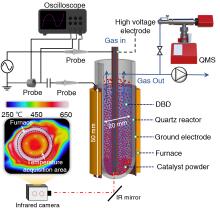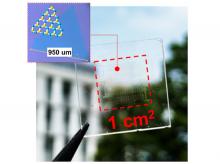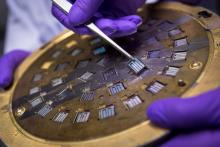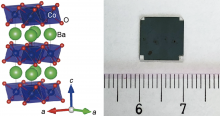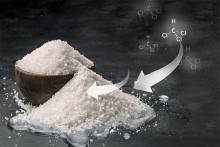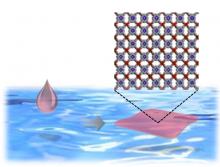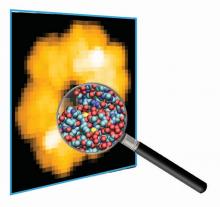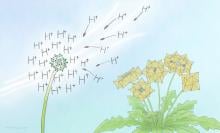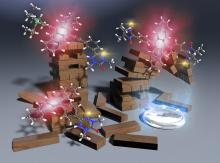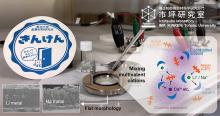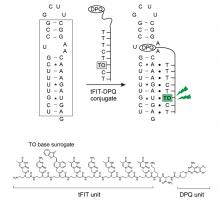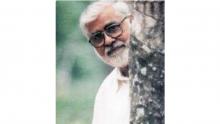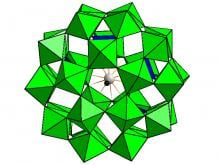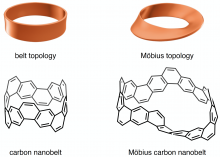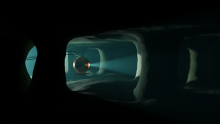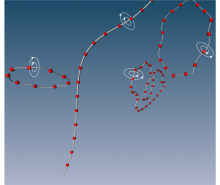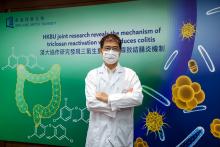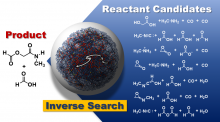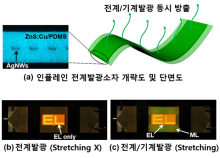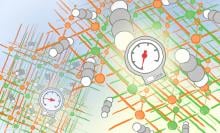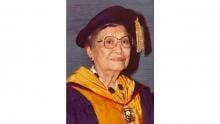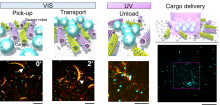Chemistry
News
22 Jul 2022
Nonthermal plasma (NTP) is used to activate CO2 molecules for hydrogenation into alternative fuels at low temperatures, also enabling the conversion of renewable electricity to chemical energy. Researchers from Tokyo Tech combined experimental and computational methods to investigate the hydrogenation pathway of NTP-promoted CO2 on the surface of Pd2Ga/SiO2 catalysts. The mechanistic insights from their study can help improve the efficiency of catalytic hydrogenation of CO2 and allows the engineers to design new concept catalysts.
19 Jul 2022
Solar panels often get a bad rap for spoiling the appearance of homes and businesses. Yet, a research group has fabricated a highly transparent solar cell with a 2D atomic sheet. These near-invisible solar cells achieved an average visible transparency of 79%, meaning they can, in theory, be placed everywhere—building windows, the front panel of cars, and even human skin.
15 Jul 2022
A research team co-led by chemists from City University of Hong Kong (CityU) and Imperial College London (Imperial College) has developed new, highly efficient and stable perovskite solar cells. The breakthrough invention is expected to greatly accelerate the commercialisation of perovskite photovoltaic technology, providing a promising alternative to silicon solar cells.
11 Jul 2022
A thermoelectric metal oxide film with a thermoelectric figure of merit of ~0.55 at 600°C has been discovered, opening new avenues towards the widespread use of thermoelectric converters.
30 Jun 2022
Researchers at Kanazawa University report in The Journal of Physical Chemistry Letters how to simulate 3D atomic force microscopy images of out-of-equilibrium systems involving biomolecules. The approach makes use of a celebrated equation from thermodynamics applicable to non-equilibrium situations.
28 Jun 2022
Researchers from the Institute of Industrial Science, The University of Tokyo, find that organic vapors can induce dissolution of molecular salts (i.e., organic deliquescence), similar to water vapor-induced deliquescence
28 Jun 2022
Rie Makiura, Associate Professor at the Graduate School of Engineering, Osaka Metropolitan University has published a review article on the facile synthesis of nanosheet materials with precise regular nanoscale pores. In 2010, Professor Makiura’s research group succeeded in fabricating the world's first MOF (metal-organic framework) nanosheets on the surface of water using a simple low-energy process. The procedure, which involved adding drops of suitably chosen molecular components to the water surface took advantage of the same phenomenon that causes the formation of oil films and led to the creation of nanosheets of exceptional integrity and stability. In the present review article, Professor Makiura describes the MOF nanosheets developed by her group so far and provides a detailed description of their characteristics and comparison with other MOF nanosheets reported around the world. In addition, she describes the formation mechanism of the MOF nanosheets on the water surface.
22 Jun 2022
New dinosaur species used claws to graze along the coast, More accurate rainfall predictions, Magnetism helps futuristic cell research, Do compression garments facilitate muscle recovery? Science journalism and why it matters for democracy and our Image of the month. Read all in the June's Editor's Choice and this month's Asia Research News 2022 magazine pick - Lessons from the dead.
20 Jun 2022
Atomic force microscopy (AFM) allows to visualize the dynamics of single biomolecules during their functional activity. All observations are, however, restricted to regions accessible by a fairly big probing tip during scanning. Hence, AFM images only the biomolecular surface with limited spatial resolution, missing important information required for a detailed understanding of the observed phenomena.
18 Jun 2022
The molecule is unusual and has ‘great potential’ in catalysis, conduction and other applications.
17 Jun 2022
A research group led by Professor Yoshio Teki of the Osaka Metropolitan University Graduate School of Engineering has succeeded in developing a new pentacene derivative that is more than 100 times more photostable than TIPS-pentacene, a photostable pentacene derivative. Additionally, the team has further clarified the ultrafast excited state dynamics in this system. In the pentacene moiety of this system, we were able to demonstrate that the transition from the excited singlet state to the excited triplet state occurs ultrafast in the time region of a 10-13 seconds. In purely organic materials without heavy atoms such as rare metals, such intersystem crossing usually occurs on time scales longer than 10-9 seconds. The empirical results of this study are expected to be applied as a method for stabilizing and developing light-unstable materials in the future.
07 Jun 2022
Researchers at Tohoku University have unearthed a means to stabilize lithium or sodium depositions in rechargeable batteries, helping keep their metallic structure intact. The discovery prevents potential battery degradation and short circuiting, and paves the way for higher energy-density metal-anode batteries.
06 Jun 2022
Researchers at the Institute of Industrial Science, The University of Tokyo studied the anomalous properties of amorphous solids, including glasses, using computer simulations, and found a common vibrational mechanism underlying them, which may help control the glass properties
06 Jun 2022
In order to quickly detect the presence of the influenza A virus, researchers developed a fluorogenic probe that could bind to the promoter region. A fluorogenic probe uses tiny molecules called fluorophores that emit light when a specific target is present.
02 Jun 2022
Giants in History: Known for her pioneering contributions to bio-organic chemistry, Darshan Ranganathan (4 June 1941 – 4 June 2001) is considered India’s most prolific chemist.
30 May 2022
A research group has revealed a new cobalt-chromium-based alloy that shares the strength, ductility and flexibility of human bones, making it ideal for implants that replace or support damaged bones.
26 May 2022
Giants in History: Known as Mr. Natural Rubber, chemist and researcher B. C. Shekhar (17 November 1929 – 6 September 2006) introduced a number of technical innovations that helped put Malaysia’s natural rubber industry on the world map.
25 May 2022
Researchers in Japan demonstrated the benefits of a new non-radioactive, neutral negative staining reagent by imaging viruses at nanometer-scale.
23 May 2022
Tetraphenylammonium, with all four hydrogens of ammonium (NH4+) replaced with benzene rings, has neither been discovered in nature nor chemically synthesized, calling into question whether it could exist. Here, we succeeded in synthesizing tetraphenylammonium for the first time, demonstrating its stable existence. The synthetic strategy used in this study, radical coupling, may be applicable to the synthesis of various related ammoniums with high structural novelty.
19 May 2022
Scientists have synthesized the first belt-shaped molecular nanocarbon with a twisted Möbius band topology—a Möbius carbon nanobelt—that paves the way for the development of nanocarbon materials with complex topological structures.
19 May 2022
Structural color printing creates new pathways for medical diagnostics and miniaturized sensors
16 May 2022
Researchers from the Osaka Metropolitan University Graduate School of Engineering have successfully developed a new technique allowing them to observe gas molecules packing into metal-organic frameworks (MOF) using infrared spectroscopy. Their innovation was to measure polarized light absorption of guest molecules in a MOF film to deduce molecule alignment using this common piece of lab equipment. This method is the first to show guest alignment and does so in real-time, while using an accessible and easily adoptable experimental setup. A short video (4 min) recreating their spectrometer modifications can be found in the Reference section.
12 May 2022
Researchers at Osaka Metropolitan University and Osaka University used numerical simulations to confirm observations of quantized vortices in superfluid helium using silicon nanoparticles, improving understanding of quantum fluids and superconductors.
03 May 2022
A Hong Kong Baptist University (HKBU) collaborative research study has revealed that certain gut microbial enzymes mediate the reactivation of triclosan (TCS) from its inactive glucuronide metabolite. TCS is an antimicrobial agent commonly used in a wide range of consumer products, and it is associated with the development of colitis.
25 Apr 2022
Researchers overcome computational limitations to predict the starting materials of multi-step reactions using only information about the target product molecule.
22 Apr 2022
Scientists at Daegu Gyeongbuk Institute of Science and Technology (DGIST) in Korea have fabricated a flexible material that lights up brightly when stretched and/or when an electric field is applied. The results were published in the journal Applied Physics Reviews and show promise for the development of bright, sustainable, stretchable devices for use, for example, as interactive skin displays and in soft robotics.
21 Apr 2022
A porous material, which opens to receive highly flammable acetylene and closes to release it, sidesteps the flaws of the existing storage method.
21 Apr 2022
Giants in History: The research of Filipino pharmaceutical chemist Luz Oliveros-Belardo (3 November 1906 – 12 December 1999) focussed on essential oils and other chemicals derived from native Philippine plants.
20 Apr 2022
In a global first, scientists have demonstrated that molecular robots are able to accomplish cargo delivery by employing a strategy of swarming, achieving a transport efficiency five times greater than that of single robots.
18 Apr 2022
An international team of researchers from India and Singapore has successfully developed a novel coating with enhanced water repellent properties using natural material from the waste crab shell.
Events
Sorry, nothing coming up for this discipline
Researchers
Sorry, nothing coming up for this discipline
Giants in history
Sorry, nothing coming up for this discipline


